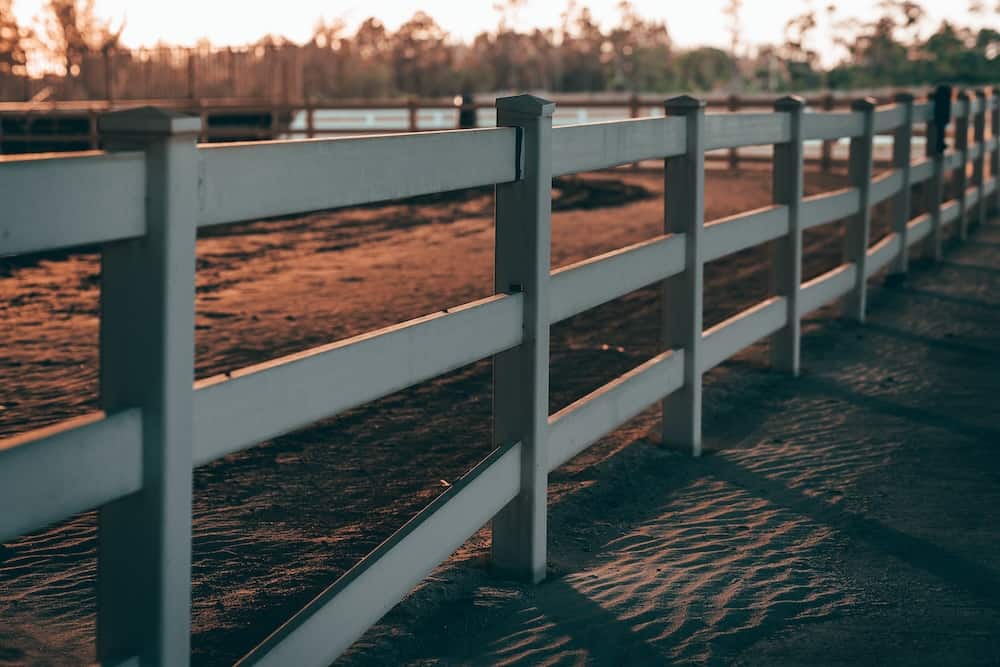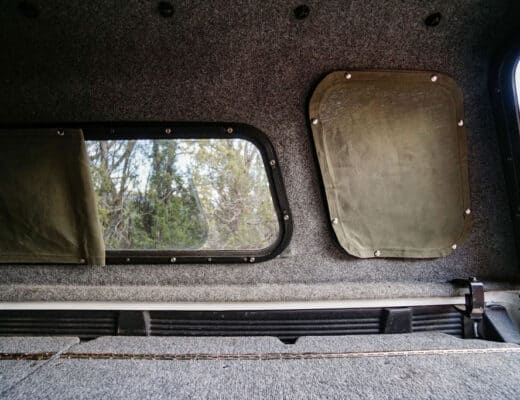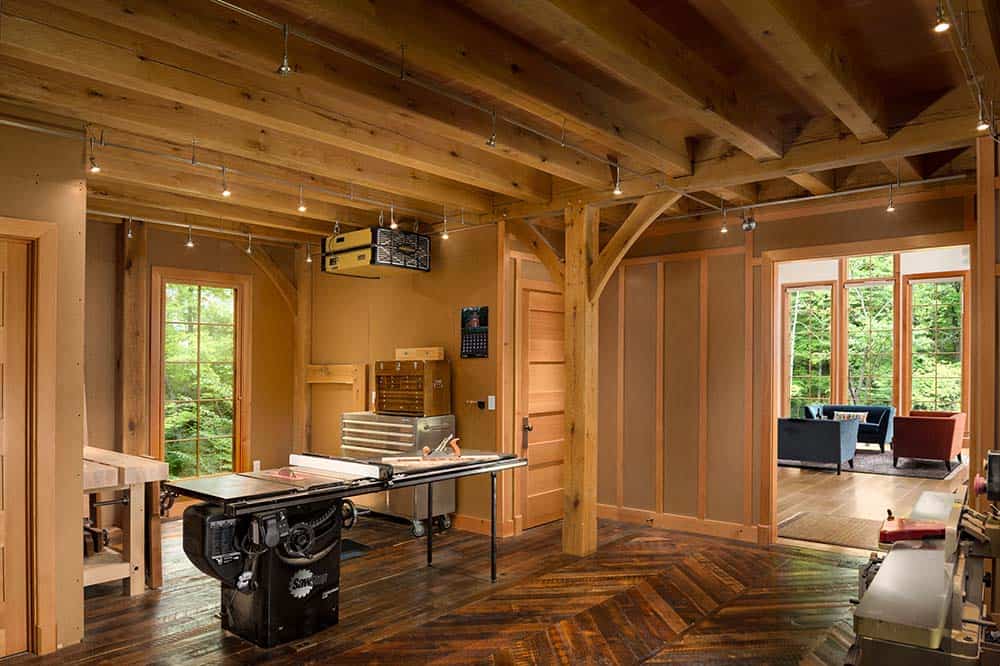If you live in an area where cold temperatures are common, you may be familiar with the term “post heaving.” Post heaving refers to the phenomenon where the ground freezes and expands, causing fences and posts to lift out of the ground.
This can be a significant problem, leading to damage and instability. This article will discuss the causes and effects of post heaving, preventive measures to take, techniques to mitigate ground freezing, long-term solutions, and common misconceptions. By understanding and implementing these strategies, you can effectively prevent post heaving and ensure the stability of your structures.

Understanding Post Heaving: Causes and Effects
Before we delve into preventive measures, it is essential to understand the causes and effects of post heaving. The science behind ground freezing plays a crucial role in this phenomenon. When the temperature drops, the moisture in the ground freezes and expands, exerting pressure on any structures in its path. This expansion can result in the uplifting of posts and fences. The impact of post heaving on structures can be significant, leading to structural damage, instability, and costly repairs.
The Science Behind Ground Freezing
Ground freezing occurs when the temperature of the soil drops below freezing point. This causes the water within the soil to freeze and expand, increasing its volume. The expansion exerted by the frozen soil can create substantial pressure on any objects within it, such as posts or foundations. Understanding this process is crucial in developing effective preventive measures.
When the ground freezes, the water molecules within the soil form ice crystals. These ice crystals interlock with each other, creating a rigid structure. As the ice crystals grow, they push against the surrounding soil particles, causing them to move and compact. This compaction generates pressure, which can be exerted on nearby structures, including posts and fences.
The extent of ground freezing and subsequent post heaving depends on various factors, such as the duration and intensity of freezing temperatures, the moisture content of the soil, and the type of soil present. Clay soils, for example, are more susceptible to ground freezing and post heaving due to their high water-holding capacity.
Impact of Post Heaving on Structures
The consequences of post heaving on structures can be severe. As the ground freezes and expands, it can displace foundations, compromise stability, and cause structures to collapse. The uplifting of posts can damage fences, decks, and other above-ground structures. It is essential to address this issue proactively to prevent further damage and ensure the safety of your property.
Structural damage caused by post heaving can manifest in various ways. Cracks may appear in the walls or floors of buildings, indicating a shift in the foundation. Uneven floors or sloping walls can also be signs of post heaving. In extreme cases, entire structures may become unstable, posing a significant risk to occupants.
Furthermore, the cost of repairing the damage caused by post heaving can be substantial. Foundation repairs, realignment of structures, and replacement of damaged posts and fences can quickly add up. Ignoring the issue or delaying repairs can lead to further deterioration and increased expenses.
Prevention and early detection are key in mitigating the effects of post heaving. By understanding the causes and consequences of this phenomenon, property owners can implement preventive measures such as proper drainage systems, insulation, and strategic placement of posts and foundations. Regular inspections and maintenance can also help identify any signs of post heaving early on, allowing for timely repairs and minimizing potential damage.
Preventive Measures for Post Heaving
To avoid post heaving, it is crucial to take preventive measures. You can follow several key steps to mitigate the risk and maintain the stability of your structures.
Post heaving, also known as frost heaving, occurs when the ground freezes and thaws, causing the soil to expand and contract. This can lead to the displacement of posts and fences, compromising the structural integrity of your property.
Choosing the Right Materials
One of the first considerations when preventing post heaving is the type of materials used. Opt for durable materials, resistant to moisture, and lower susceptibility to temperature changes.
For example, pressure-treated wood is popular for posts and fences in areas prone to ground freezing. The treatment process involves injecting preservatives into the wood, making it more resistant to rot and decay caused by moisture. Metal posts, such as galvanized steel or aluminum, are also excellent options as they are not affected by moisture and have a high strength-to-weight ratio.
Another alternative is using composite materials, which are made from a combination of wood fibers and recycled plastic. These materials are highly resistant to moisture and temperature changes, making them ideal for areas with extreme weather conditions.
Importance of Proper Installation
Proper installation is vital for preventing post heaving. Ensure that posts are securely anchored in the ground at an appropriate depth. Digging deeper below the frost line can prevent the posts from being affected by ground freezing.
Before installing the posts, it is essential to prepare the ground properly. Remove any vegetation or debris that may hinder the installation process. Level the area and ensure the soil is compacted to provide a stable base for the posts.
When setting the posts, consider using concrete footings. These footings provide additional stability and prevent the posts from shifting or tilting. The concrete should be mixed to the appropriate consistency and poured around the post, ensuring that it reaches below the frost line.
Furthermore, compact the soil properly around the posts to minimize the risk of movement and uplift. Use a tamper or a compactor to firmly pack the soil, ensuring that it is tightly packed around the posts.
In areas with particularly challenging soil conditions, such as clay or sandy soil, consider using gravel or crushed stone as a base for the posts. This will improve drainage and reduce the risk of soil expansion and contraction.
Regular maintenance is also essential to prevent post heaving. Inspect the posts and fences regularly for any signs of movement or damage. Address any issues promptly to prevent further damage and ensure the long-term stability of your structures.
Techniques to Mitigate Ground Freezing
While preventive measures are crucial, there are additional techniques you can employ to mitigate the effects of ground freezing. These techniques help protect structures and ensure the safety and stability of the surrounding environment.
Soil Management Strategies
Implementing effective soil management strategies can help reduce the impact of ground freezing on structures. One such strategy is improving the drainage around the area. Ensuring proper drainage prevents excess moisture from accumulating and freezing in the ground. This can be achieved by grading the landscape to create slopes that direct water away from the area, installing drainage systems, or adding permeable materials such as gravel or sand to enhance water infiltration.
Another soil management technique is the use of soil additives. These additives, such as organic matter or soil conditioners, can improve the soil’s structure and water-holding capacity. Enhancing the soil’s ability to retain moisture reduces the risk of freezing. These additives can also improve the soil’s overall fertility, promoting healthier plant growth in the area.
Utilizing Thermal Blankets
Thermal blankets can serve as a protective layer to insulate the ground and minimize the impact of ground freezing. These blankets are typically made of geotextile materials, which help retain heat and prevent moisture from freezing. By covering the area around the posts or structures prone to heaving, thermal blankets can provide additional protection.
Furthermore, thermal blankets can be combined with other insulation methods to enhance their effectiveness. For instance, installing underground heating systems can generate heat that warms the ground and prevents freezing. When used with thermal blankets, these heating systems can create a more robust barrier against ground freezing.
Ground Thawing Techniques
In situations where ground freezing has already occurred, various ground thawing techniques can be employed to mitigate its effects. One commonly used method is the application of heat. This can be done through steam, hot water, or electrical heating systems. Introducing heat to the frozen ground makes ice crystals melt, allowing the ground to regain its original stability.
Another ground-thawing technique involves the use of chemical agents. These agents, such as calcium chloride or potassium acetate, lower the freezing point of water, enabling it to thaw at lower temperatures. By applying these chemicals to the frozen ground, the ice melts, restoring the ground’s integrity.
It is important to note that ground thawing techniques should be cautiously implemented, as improper use can lead to unintended consequences. Consulting with experts in geotechnical engineering or experienced professionals in ground freezing mitigation is recommended to ensure the appropriate application of these techniques.
Long-Term Solutions for Post Heaving
While preventive measures and techniques can provide temporary relief, implementing long-term solutions is key to preventing post heaving in the future.
Regular Maintenance and Inspection
Properly maintaining and inspecting structures are crucial for identifying and addressing potential issues before they escalate. Make it a habit to inspect posts, fences, and other structures for signs of movement or damage. Promptly repair any loose or uplifted posts to ensure their stability and prevent further problems.
Professional Services for Post Heaving Prevention
For complex or large-scale projects, it may be beneficial to seek professional services for post heaving prevention. Experts in the field can assess the unique characteristics of your property, recommend specific measures, and implement specialized techniques to mitigate the risk of post heaving. Their experience and knowledge can provide long-term solutions and peace of mind.
Common Misconceptions About Post Heaving
Despite its significant impact, post heaving is often accompanied by misconceptions. Let’s debunk some of the myths surrounding ground freezing and its prevention methods.
Debunking Myths About Ground Freezing
One common misconception is that ground freezing can only occur in extremely cold climates. However, ground freezing can happen in various regions, even in areas with moderate winter temperatures. It is essential to recognize that ground freezing can affect structures regardless of the climate.
Facts Vs. Fiction in Post Heaving Prevention
Another misconception is that post heaving prevention methods are one-size-fits-all. In reality, the appropriate preventive measures depend on various factors, including soil composition, climate, and the specific structure. Tailoring preventive measures to your unique circumstances is essential for optimal effectiveness.
In conclusion, preventing post heaving when the ground freezes is crucial to maintain the stability and integrity of structures. By understanding the causes and effects of post heaving, implementing preventive measures, utilizing techniques to mitigate ground freezing, and considering long-term solutions, you can effectively safeguard your property. Remember to address common misconceptions and tailor your preventive measures to suit your unique circumstances. By taking proactive steps, you can prevent post heaving and enjoy the lasting benefits of stable and secure structures.



